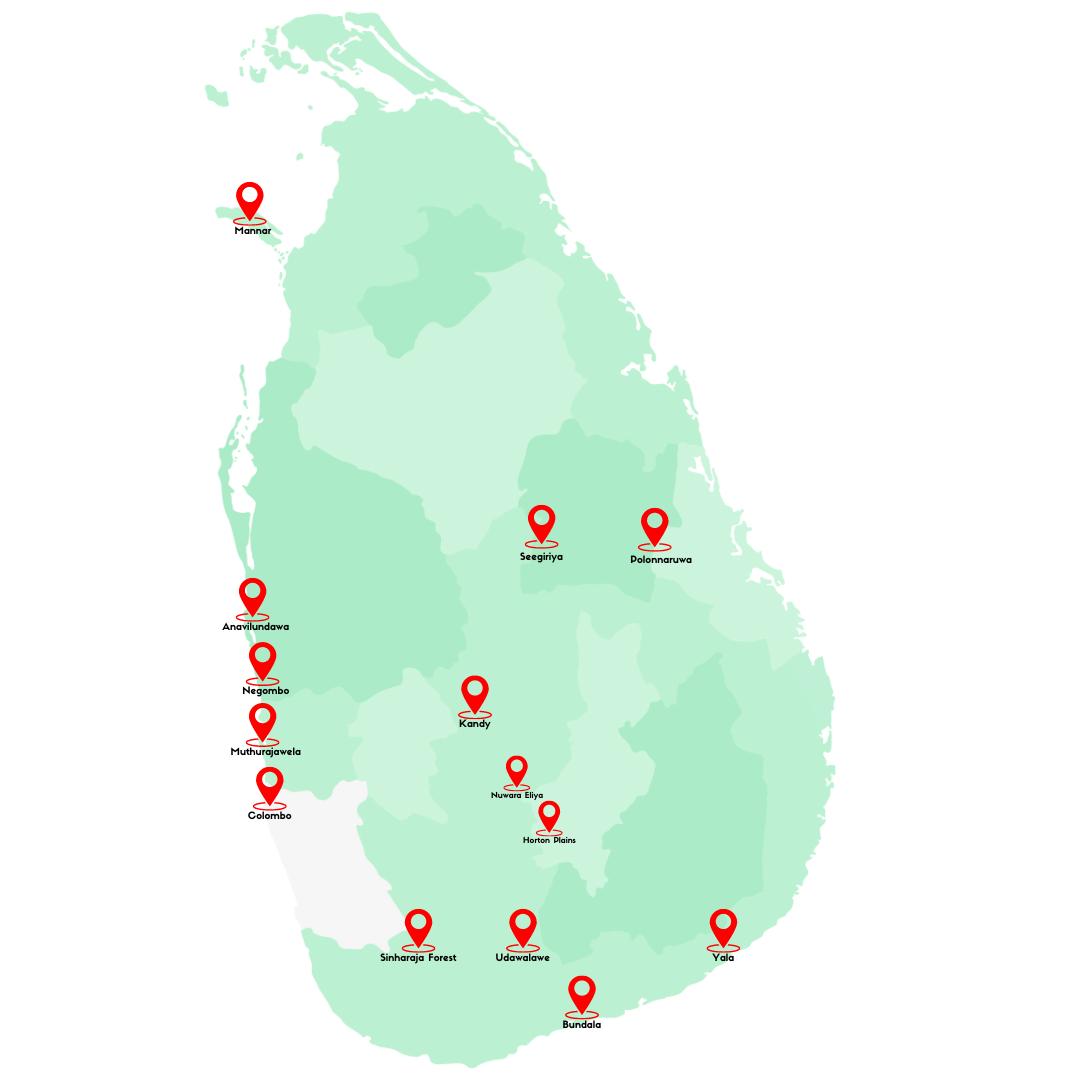Itinerary
Morning arrival at Colombo International Airport.Welcome and transfer to Jetwing Lagoon Resort not too far from the Airport.
It is not rare for a keen bird watcher to find a lovely little green heron fishing at the edge of the water into the dusk.
In the evening we do some sightseeing in Negombo with an option to visit a traditional pub for a beer.
Negombo
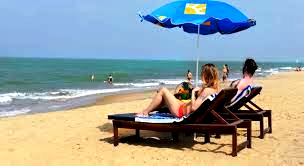
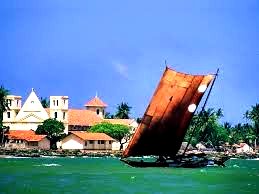
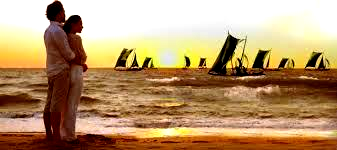
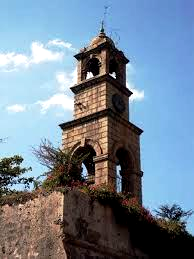
Negombo is a former Portuguese and Dutch colony and is one of the main fishing habours of the Island. A morning visit to the lagoon- mouth will thrill you to the limit when ancient catamarans and modern motorboats return cheek by jowl to the shore after competing for their nights’ catch. The ensuring chaos of sorting, buying, and selling with torrent of bargaining will surely leave a visitor spellbound by the coarse verbal exchanges to say nothing of its heart-stopping typical coastal character. You could also visit the vast beach of the cape they use for drying fish if only if you could bear the stench. But it’s rather educational as quintessential Negombo! In addition to the prominent activities at the lagoon-mouth and the shoreline, Negombo boasts of some of the finest Catholic Churches in the Island. Alluringly, most date back to the 18th and 19th centuries with a couple to times even before. You will also be driving along the tourist colony where hotels, guest houses, restaurants, pubs, discos, and sea-food outlets dress up the roadside making the famed colony fabulously bright and gay.
Dinner and overnight at Jetwing Lagoon Hotel.







We leave for a boat safari at Muthurajawela wetland with packed breakfast. It is better if the group can leave the resort by 0600 AM. During the safari your boatman will navigate along narrow channels of brackish water and through leafy mangrove swamps. The swamps are home for numerous species of aquatic birds that belong to the families of herons, bitterns, egrets, storks, cormorants, darters and teal. An occasional bird of prey may show up to pounce on a betraying movement beneath the clear water! In addition, water monitor, otter, tortoise, and even estuarine crocodile haunt the waterways regularly. Elusive fishing cat is another that frequent the mangroves but is mostly nocturnal.



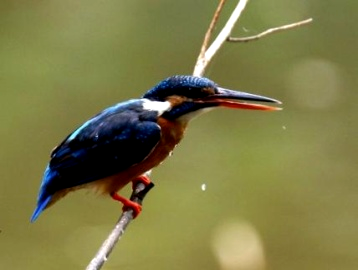
Afterwards we travel inland bypassing the city of Colombo to visit the Sinharaja Rain Forest.
The journey will take you through the gem country Ratnapura where you could stop by at a gem-pit briefly to study the art of gem mining. You may find the methods quite primitive, but it is what the natives believe in and are successful with.




Full day explore Sinharaja Forest for bird watching.
SINHARAJA RAIN FOREST
Here we are at the great rain forest home for many exotic endemic birds, butterflies, dragonflies, fish in addition to some rare mammals found in the island that include the leopard. Most of all it is a treasure trove for nature lovers and botanists as thousands of plants, trees, creepers, flowers not to mention many types of rare forest orchids are not found anywhere else in the world. The forest spreads across now a valley now a peak covering an extensive area connecting three districts in two provinces. Notably, sun light hardly reaches the forest-bed due to many existing canopy levels through which whatever sunlight proliferates. Incessant rain if not perpetual drizzling is experienced within the forest during most parts of the year. Rain at times can lash in sudden and major downpours and could soak you profusely in no time. Therefore, a raincoat is a must in the paraphernalia you carry in your sack!
The hike passes many rivulets, pellucid brooks, limpid rock pools and gushing waterfalls as you venture deep into the jungle. Twenty-three endemic species of birds in the island out of a twenty-nine live here and are mostly found in feeding flocks. This includes the colorful blue magpie and the Ceylon trogon, the primitive red-faced-malkoha and the elusive chestnut back jungle owlet. Recently added Serendib scops owl and Ceylon frogmouth are considered price sightings among many for the keen bird watcher. Animals are hard to find due to the thick vegetation and their nocturnal habits but butterflies, dragonflies, beetles, numerous insects and even an occasional snake sighting are common.
Above all, the rainforest character of Sinharaja contrasts so well with the flora & fauna found in the rest of the island, making it remarkably unique. It is the reason why the forest is declared a ‘world heritage site’.
We stay at the Martin’s Lodge which is basic. That includes food.






Leave for Udawalawe National Park on a 3.5-hour drive. The journey is via Pothupitiya and Rakwana. Upon arrival at the park, commence a jeep safari in the afternoon.
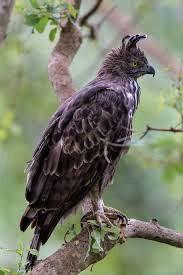
Uda Walawe National Park
Uda Walawe National Park situated in the Southern Province of the Island is within the arid dry zone of Sri Lanka. The zone receives little rain fall in contrast to the wet zone where Colombo is situated. This park is considered as one of the best to view and study the Asian elephant. The park has a declared virgin forest along the meandering river that finally empties its flow onto a great lake; one of the biggest in the island. Surrounding the lake there are vast plains stretching for miles and these become much sought feeding grounds for grazing animals after the monsoon rains. The fauna includes some of the largest herds of Asian elephant; at times exceeding two hundred. In addition, you will come across all other mammals of Sri Lanka but locating leopard would be difficult owing to their frequenting the inaccessible rocky outcrops. Other mammals include many types of deer, elk, jackal, pangolin, mongoose, crocodiles and monitors, wild boar, and wild cats. Peacock and the jungle fowl add vividity of color to the green plains. Park is famous for sightings of rare birds as well. That includes a variety of birds of prey; both resident and migratory. One mustn’t miss out the scenic beauty of the park as towering mountains rise from the lake as well as from the plains making fascinating backdrops every now and then. Dusks are so panoramic and it’s not rare for elephants to present themselves in silhouette when the sky turns scarlet allowing the sun to dip along.
Afterwards proceed to Tissa on a further hours’ drive and check into The Safari Hotel.
Dinner and overnight at The Safari Hotel.
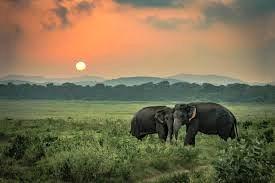


We cover the Bundala National Park by jeep in the morning and the Yala National Park
in the afternoon.
BUNDALA NATIONAL PARK
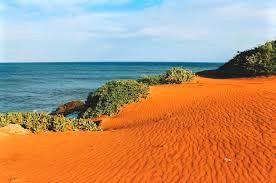
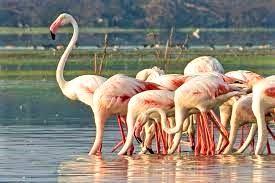

Bundala is known to be the best wetland in the Island for bird watching. The cluster of large lakes, mostly of brackish water and the arid forest cover attracts thousands of migratory birds from Europe and Northern Asia during the northern hemisphere winter. Many resident aquatic birds and summer loiterers roost, and nest in colonies in this bird watcher’s paradise. A network of jeep tracks will take a visitor from one lake to another through the thorny bushland. The openings in foliage fringing the lakes will bring to light colonies of waders and flamingoes feeding in the diet rich shallow waters. The park boarders the remote Indian Ocean on one side and its landscape of sand dunes attract rogue elephants who are fond of salt. Your jeeps will tackle some of the most inaccessible terrains within the park with great daring drives to explore some unbelievably wild and indescribably unique coastal landscapes amidst the towering sand dunes. Among many other mammals, the park has a large population of estuarine crocodiles, living in the well spread-out mangrove swamps. The migratory season from November to April brings about the best in the park.


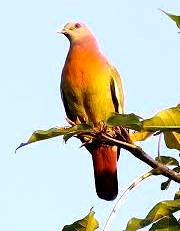


Lunch at Tissa.
YALA NATIONAL PARK



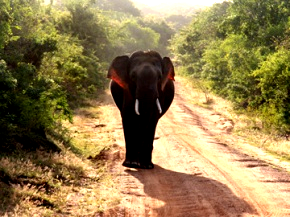
Yala is the largest National Park in Sri Lanka and is situated in the remote Southeastern corner of the Island. It covers more than 400 Sq Miles. This park is renowned as the best in Asia for sightings and photography of the Asian Leopard. It is considered the area that has the highest density of leopards in the world. The landscape of Yala varies from massive and artistic rock formations in a thorny arid setting to lush riverine forests of the Menik river. Whilst it boasts of vast parklands where elephant, deer, elk, wild buffalo, wild boar, and black nape hares graze freely, it is also the hunting grounds of mongoose, jackal, civet, otter, and the fishing cat. Many birds, aquatic and other types, can be viewed at numerous water holes and picturesque lakes of the park presenting breathtaking natural settings of enchanting beauty. Colorful peacock and the National bird; the graceful jungle fowl steal everything else. Very rare species of birds, both resident and migratory, have been recorded and filmed at Yala by reputed wildlife photographers. The great Indian black neck stork, the largest bird in Sri Lanka would be considered a price catch for it is earmarked for extension as only less than ten birds have been accounted in the region! Nevertheless, it was a relief for concerned nature lovers when they found little offspring with adults in 2021.
Dinner and overnight The Safari Hotel, Tissa.




Leave for Nuwara Eliya after breakfast. En route free for some bird watching at the Deboraweva tank and some other notable lake-based sites.
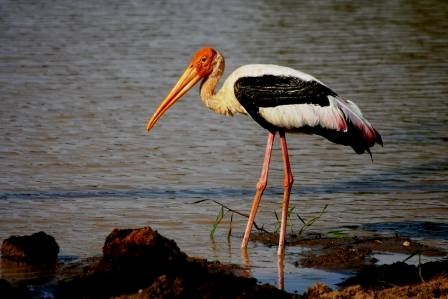

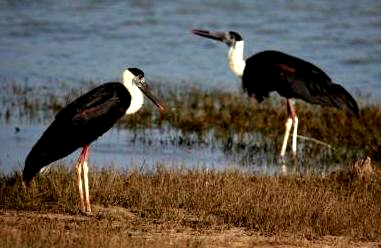
Lunch en route.
Buduruwagala rock carvings of the 8th century is an optional stop which is also a great bird watching site.


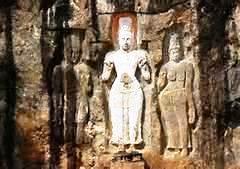
ELLA
En route stop at the scenic Ella for lunch. This is the location where through two gigantic rock boulders one could watch glittering waters of the Indian Ocean 60 miles away thus presenting a magical view of uninterrupted nature. The British who ruled the island for 150 years spotted this most amazing wonder of nature and built a rest house at the location over hundred years ago. Part of that charming colonial building is still preserved for future generations to discern the splendor of those grand old days. The beautiful garden of the rest house where colouful roses still bloom is only a little this side of heaven. You could also stop at the majestic Rawana Ella Falls that cascade down a long way along a rocky precipice into a deep pool at the foothill.
Ella Gap…..


Upon arrival check into Galway Forest Lodge.
This is a hotel surrounded by green woods of the Galway nature reserve.
NUWARA ELIYA



In the month of April English flowers bloom in abundance in the immaculately maintained gardens of Nuwara Eliya. During your stay you could visit the Hakgala Botanical Gardens which is a treasure trove for botanists. You’ll also get to identify most of the hill country birds. Nuwara Eliya; the capital of tea country resembles a small Scottish town with its classic Victorian and Tudor style buildings and is ably backed by a salubrious climate. British built this town less than two hundred years ago as a spot of entertainment for their planters. They built a 18-hole golf course, a grand horse racing track, irresistible club houses with wooden dancing floors, sprawling tennis courts, lovely little villas, and a beautiful lake in the middle of all that which they stocked with trout so that planter families could come on horseback from the nearby estates to spend the weekends in style. For most at the time, the vibrant township may have been closest to their homes far away.
Towards evening we could visit the Hakgala botanical gardens or the Galway nature reserve for bird watching.
Dinner and overnight at Galway Forest Lodge, Nuwara Eliya
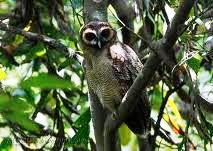
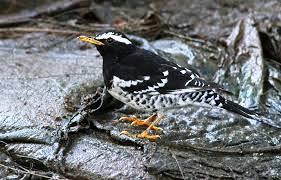
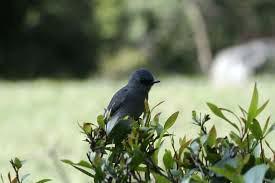

We leave for Horton Plains National Park at early hours by jeep or in small vans with packed breakfast.
The journey involves a further rise in altitude before you reach the park entrance. Upon reaching, commence the eight KM hike on a foot path across the vast plain that is set in a unique setting at 7000 feet above sea level, which is another wonder of nature. The plain is home for large herds of sambhur(elk) and in the early morning you can watch the herds feeding on the shoots of rich grass; one of the main characteristics of the plain. Forests around the plain are described as tropical temperate and are grown to withstand the turbulent storms that sweep the high altitudes every now and then. Halfway during the hike, you will come across the famous drop that is called the “world’s end”; a sheer drop of a gorge which is over three thousand feet deep. On clear days one could watch the life in miniature form at the foothill which belongs to an entirely different district, accessible only after a circuitous six-hour drive! Later, you’ll descend along a steep precipice where now stands a well-appointed wooden deck – so that you don’t have to negotiate the treacherous slope – to watch the breath-taking Bakers Falls cascading over a giant rock before plunging into a deep pool presenting an awe-inspiring view. In addition to its unique flora, the National Park is home for very rare mountain birds including the endemic “Arenga”, the whistling thrush, and the majestic mountain hawk eagle. The one-horned lizard, the bear monkey, and some toads to say nothing of many insects, butterflies and dragon flies that fill the checklist. The park also has a sizeable leopard population, but sightings are rare due to their elusive nature during the daylight hours.
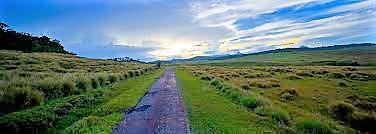


Afterwards proceed to Nuwara Eliya for lunch and then leave for Kandy.
The drive is one of the most scenic in the island as the road winds when you descend to an elevation of 1,500 feet from 6,500 feet above sea level. During the 3 hour drive you will be passing some great tea plantations, mist shrouded mountain peaks, gushing waterfalls, and a vast man-made reservoir found in a deep valley that produce hydroelectricity for the Islanders. En route you can stop at the Labukelle Tea Factory where you will get to learn about the process of drying tea leaves. A walk among the fine tea bushes systematically laid on mountain slopes with its fine aroma will thrill you to the limit.
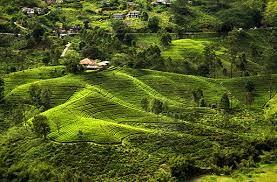
KANDY
During your stay you could explore the quaint city of Kandy, the last Kingdom. Visit the Temple of the sacred Tooth Relic; the most important place of worship for Buddhists world-over. At the Tooth Temple you’ll get to participate in a colourful ceremony to the tune of the Eastern tom toms which would be full of timeless culture and age-old rituals.
You’ll also visit the upper lake area to catch a bird’s view of this fascinating lake city and the great temple cluster that is declared as a world heritage site now. A visit to the botanical gardens following morning will thrill you for it is the only one of its kind in this part of the world. Being the pleasure gardens of the Queen once and found hugging a meandering river, you could saunter under the fine shadow of great trees for hours passing manicured lawns and lovely flowering shrubs in wooded groves. A visit to the famous orchid house is a must for orchid lovers.

Evening, one could walk around the Kandy Lake and along its paved paths with the great Temple in the backdrop, enjoying the cool breeze that flows freely from the distant hills. Kandy being the last Kingdom offer valuable souvenirs in handicraft and gems. Sri Lanka is the only country in the world in which world-famous blue sapphires are found in its pure original form.
Dinner and overnight at Tree of Life Hotel or similar.





We visit the Udawattekele forest reserve at early hours for a bird walk. As the reserve boarders the British war cemetery of the colonial times one could hop across to take photographs of the important site. The thick and gloomy forest is famous for grackle and owl sightings which are a plenty on any given day.


We travel to Sigiriya at leisure afterwards. We travel to Sigiriya at leisure afterwards. En route stop at the Dambulla cave temple.
SPICE GARDEN
The Island had been famous for its spices since the medieval times and is considered as one of the main reasons for the Europeans to conquer her and then for the Arabs to trade with her from the 13th century onwards. The most interesting feature would be the opportunity you’ll get to identify the real plants of spices you are familiar with in your day-to-day life. A qualified guide will do a conducted tour of the garden and a presentation of its products.
DAMBULLA
Dambulla cave temple is situated not too far from Sigiriya; yet another world heritage site where in five pre-historic caves you’ll find not only fantastic colourful rock-wall drawings, mostly of Buddha and events of his life, but some outstanding sculpture work as well. Some do date back to the distant 1st century. The paintings are perhaps second only to the ones at Ajantha and Ellora in Aurangabad in India. Eminent painters who visit the caves as an essential part of their itinerary are often mesmerized by the creation of such rich colours, so soothing to the eye, so early in civilization, and express their wonderment as to how the treasured paintings had survived all these centuries in their original form!
Upon arrival at Sigiriya check into Sigiriya Village Hotel.
We visit the Sigiriya Rock Fortress in the evening.
SIGIRIYA
The spectacular rock fortress of Sigiriya belongs to the 5th century. It’s yet another world heritage site. Different theories of its creation are published by eminent archaeologists. Some say that once a Kingdom of a King was later used by monks as a monastery complex.
Whichever the theory, the 640-foot gigantic rock striking into the clouds from the arid flat plains by itself presents an inscrutable mystery to most. As you approach the great fortress, firstly you’ll get to brave the deep moat built right around the rock that had been infested with man-eating crocodiles during the King’s time. The pleasure gardens of the King come next in where during the rainy season, water fountains still emit a substantial spray most astonishingly. After you pass the classic rock garden and stroll through stunning boulders that may have held many impressive structures together as guard points in ancient times, you’ll proceed towards the all-important cavity in the rock located halfway up where the world-famous frescoes of the beautiful maidens are found, painted on the very rock-wall in natural colours so miraculously. This indeed is a masterpiece that is priceless.
At certain times of the year, you could watch nesting peregrine falcons in some of the other cavities on the rock-wall.
Afterwards, proceed to the colossal Lions paw made of bricks, climbing further along the incredible mirror wall on which the yesteryear admirers of the paintings wrote poetic eulogies delineating what they saw in quaint, early Sinhalese characters, perhaps readable only to the archaeologists now.
A further adventurous climb from the Lion’s paw will take you to the flat summit of the rock to enjoy one of the most beautiful views in the Island, that of the ever-green tree canopy of the Island’s dry zone that is seen dotted with ancient man-made lakes. The immediate area surrounding the rock is a declared sanctuary in where wild elephants and other game still roam. On the peak you will also come across the King’s court, remains of his living quarters and his pool complex, presently opening out to the heavens in the absence of any shelter! The mystique fortress which is sadly dead now leaves its wonderful legacy for you to visualize its heyday with ease.
We do a night walking safari in the bush looking for rare owls!
Dinner and overnight at Sigiriya Village Resort.

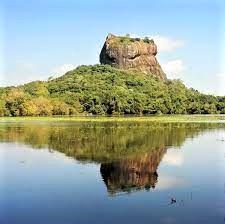



We spend the morning bird watching in some sites around and then proceed to Polonnaruwa lake. Lunch and a village tour en route.
Village Tour (2 hours )
In the morning hours you can do a fantastic village tour where you will be taken on traditional bullock-carts to a very remote village that borders an ancient tank. The surrounding areas are infested with wild elephants and the brimming lake surface will be dressed-up in blooming water lilies and lotuses. Numerous aquatic birds will scuttle through the lake herbage and cormorants will form artistic formations in the skies above. You will then board boats (life jackets are at hand) and the boatmen will navigate the boats towards seasonal chena cultivations found in isolation on the opposite bank where you will be entertained with refreshments. A cooking demonstration by the native villagers is on the cards where the guests too could take part as an educational mission, and should you wish to have a meal it will be served on a rustic tree house built to chase the wild animals away. Fresh tank fish fried is customary. Ones who fancy alcoholic beverages can try-out arrack cocktails served in coconut shells!
In late afternoon at Polonnaruwa, we board canoes and visit an uninhabited island in the middle of the lake for bird watching. It is called the bird island and many aquatic birds roost and nest in this amazing colony.







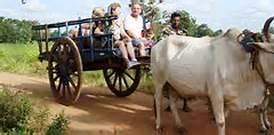

The Incredible 12th century Tank – Parakrama Samudra.
There will be thousands of chirping aquatic birds crossing the lake to their favorite tree to roost and the setting sun will decorate the sky with a symphony of colors. The comfy blowing that blows across the vast lake will offer soothe for the guests to enjoy the wondrous Mother Nature at her best.
We return to Sigiriya Village Hotel for dinner and overnight stay.



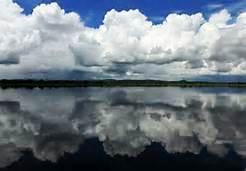




After breakfast we travel to Mannar bypassing Anuradhapura. Upon arrival, we check into Palmyra House in Mannar outskirts.
In the evening and the next early morning, we cover the bird sites at the shore.
Mannar
Mannar is unique in many ways. It is just short of being a desert in climate, the closest to the mainland India and is the access to the Adam’s bridge; a strange string of natural uninhabited sand islands in shallow seas connecting Sri Lanka with the mainland. The then official residence of the British Governor Sir Fredrick North in early 1800s – which was called the Dorrick Bungalow at the time – now stands on a cliff in ruin. It is where the Governor spent time watching the priceless pearls being fished out from the shell-rich Indian Ocean of Mannar straight. Also, there are remains of a 16th century Portuguese and Dutch Fort and an equally old giant baobab tree, but it is the great seaside character of the ancient seaport that steals everything else. There are written records to say that the port had been used since 4 BC, both for trade as well as for numerous military invasions from the mainland. During the bird migratory season from December to April the Mannar basin becomes the temporary residence to vast number of bird species. There are times when over 10,000 flamingos line up on seaside creeks as the creeks become popular feeding grounds after the Northeast monsoon fills them to brim in November/December. A journey to the nearby Giant’s tank bed could be fruitful as well for the keen bird watcher.
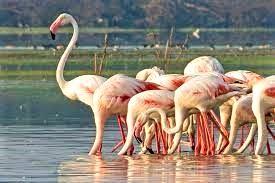



Dinner and overnight at Palmyrah House, Mannar.






We travel to Wilpattu area and check into one of the hotels like the teal cottage at the entrance to the park. The little guest house with basic facilities serves our purpose.
Afternoon leave for a jeep safari at the Wilpattu(lake country) National Park; undoubtedly one of the most beautiful National Parks in the Island. The park is reached after a 15-minute drive from your hotel.
Wilpattu National Park
The safari covers most of the 47 fresh and brackish-water lakes from medium to large in size where wild and bird life thrive on their well wooded banks.
A network of jeep tracks takes you on the pristine sandy plains that hugs these enchanting lakes, home for leopard, sloth bear, langur and torque monkey, jackal, different types of cats and mongoose, all four types of deer from sambhur(elk) to mouse deer, monitors, and crocodiles. The elephant population is thin compared to other parks but the ones you come across are massive rogue elephants that live a single life most of their life.
In addition, large numbers of resident and migratory birds live in this strange eco-system and extremely rare birds have been recorded by bird watchers in their intriguing expeditions of the inaccessible forest glades. One border of the park is the rugged Northwestern coast where the first inhabitants of the Island who arrived from North India said to have landed some two thousand five hundred years ago. The distance involved is too much for a normal half day safari to cover these remote sites. The untouched vegetation of the Wilpattu forest too is unlike any other region where the largest and the oldest trees in the Island are found which is a clear sign that this area may have been left in the wilds for a considerable time.
Dinner and overnight at your hotel.
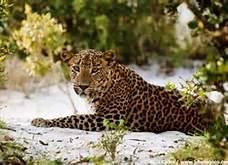





We leave for Colombo at leisure.
En route visit the Ana Vilundawa bird sanctuary, which is a cluster of lakes, not too far from the township of Chilaw. Lunch en route.
Upon arrival check into OZO hotel, facing the Indian Ocean.



COLOMBO
Explore the city of Colombo visiting the lovely Galle Face Green; the great British Built lawn overlooking the waterfront of the Indian Ocean, Classic old parliament and the modern-day skyline of the city integrating into one another so incredibly.





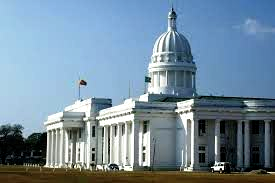






It is a city where great colonial era buildings are still left intact and are immaculately maintained to stand side by side with the modern in the most elegant manner. This outlook in fact is not seen so prominently in any other city in Asia. It no doubt speaks volumes of the glorious past attached to the city of Colombo from the 15th century onwards when the ownership of the city changed hands from the King to the Portuguese and then to the Dutch and finally to the English, until the Island became a sovereign state once again in 1948. All Europeans left their own footprints in the city and more importantly their values among its people that made the Islanders a great Nation and their capital so pleasingly special. You will get to visit the 17th century Dutch Wolfendhal church with its wheezing pump-organ, The Museum, the Town Hall, and The Victoria Park built by the British, a lovely temple of Buddha in a lake setting and a colorful Hindu shrine. The latest attraction is the tastefully salvaged 400-year-old Dutch Hospital in Colombo Fort which is now renovated to its former glory ever so wonderfully. You will find lively pubs, ritzy restaurants offering choice cuisines, coffee and tea houses, up-market spas, and even ample shopping, all within the unparallel charm of the vast hospital complex. The area with rustic court yards, maze of alluring terraces with seating resembles European thoroughfares of the past. The latest addition to the city is the newly renovated racecourse which is now an international class rugby grounds where the mammoth grandstand feature great up-market shopping with amazing eating-houses. It is no doubt that this is the oldest colonial grandstand and pavilion in Asia.



Latest Independence Arcade Mall – one of many salvaged colonial buildings
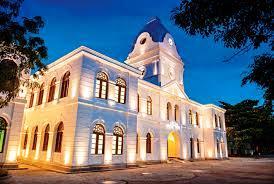
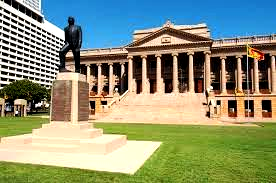

Latest Independence Arcade Mall – one of many salvaged colonial buildings. The Brand New One Galle Face which is very upmarket facing the Colombo waterfront!


Shopping of traditional produce of Sri Lanka unique to the island!
Barefoot Galleries and Paradise Road



Odel department store and House of Fashion department store
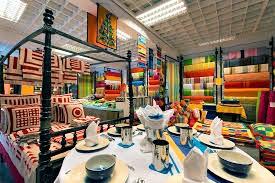



Galleries Café
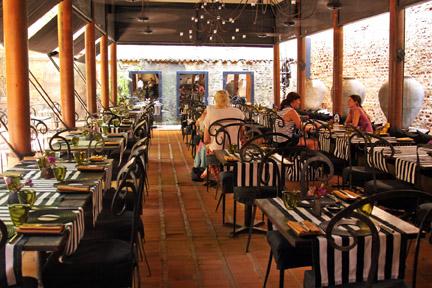
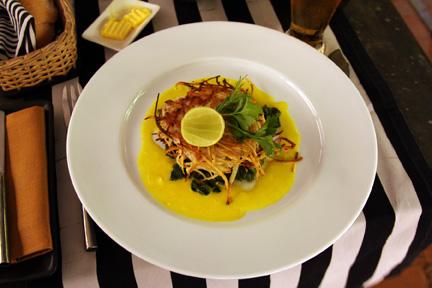

Galleries café is the former office of the world-renowned Sri Lankan architect Mr Geofery Bawa, now converted to this most fascinating restaurant, loved, and admired by many a visiting tourist for its highly refined taste in its deco, not to mention its mouth-watering cuisine.
Ministry of Crab
Found in the landmark 400-year Dutch Hospital, downtown Colombo.
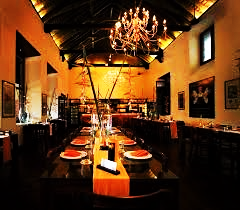
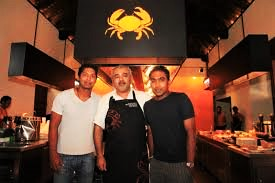
Early morning leave for the Airport for the departure.
…………………………. END OF THE BIRD WATCHING TOUR ……………………………………
